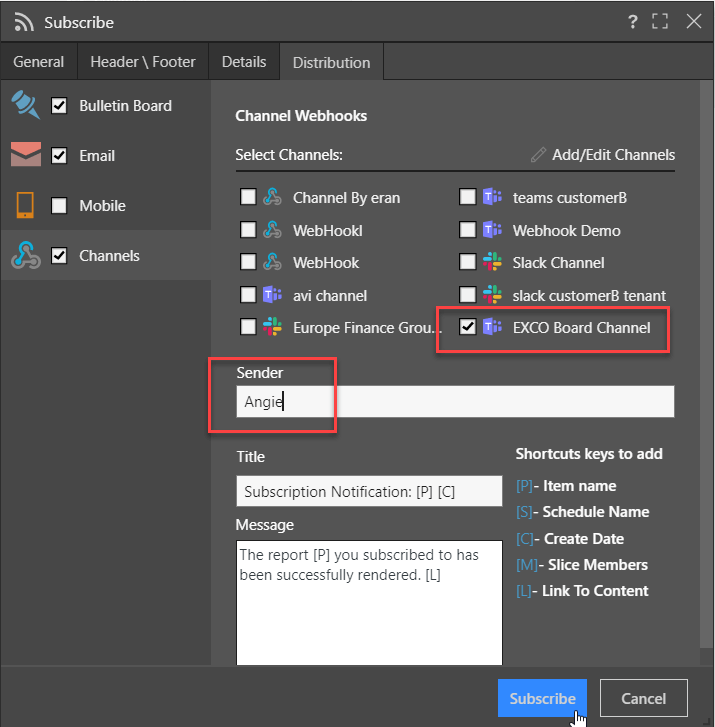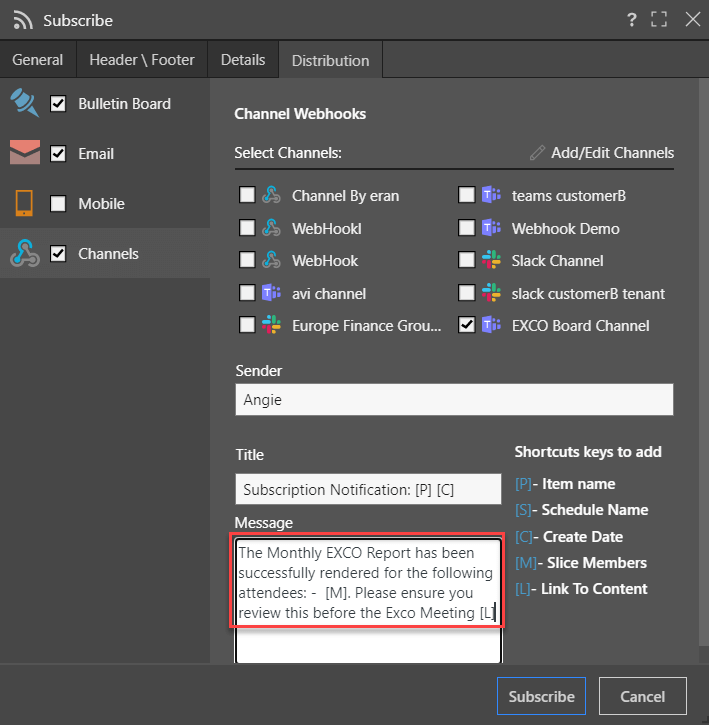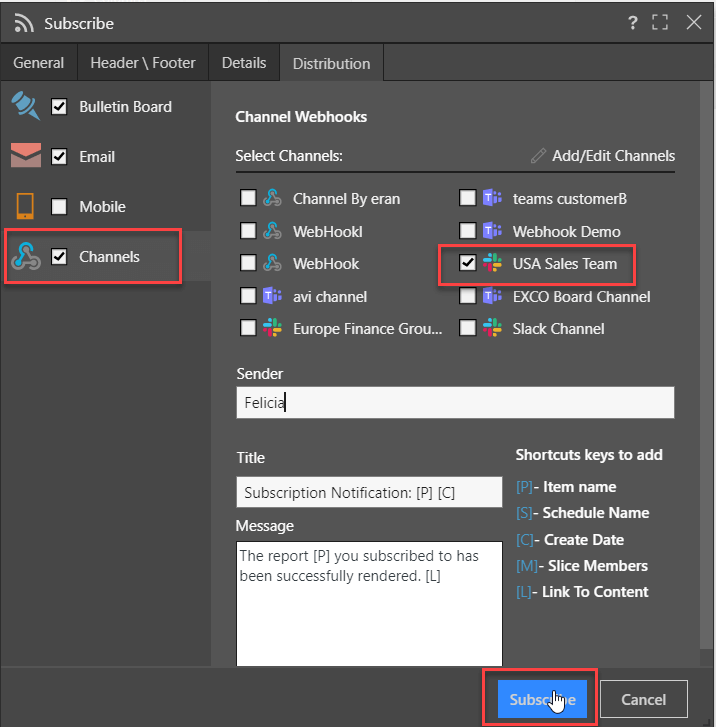Webhooks provide a mechanism to publish information to external applications like Microsoft Teams, Slack and other enterprise applications about an event, an updated status, or any other completed milestone. For example, when a company is hosting a webinar, they can use webhooks to send out the reminder to their audience on a 3rd-party application of when and where the event is happening. This “push” methodology obviates the need to constantly check apps, or poll them for the occurrence of an event.
BI platforms that incorporate consolidated enterprise data are, ideally, designed to push messages to applications when events or alerts are triggered. However, the coding and technical requirements to configure and integrate applications is beyond the pale for regular business users.
Pyramid’s analytics platform seamlessly integrates webhooks as a ready-to-use function to distribute scheduled publications, alerts, and subscriptions to any external application that supports webhooks.
The problem
As more and more corporate standards dictate tools like Microsoft Teams or Slack to be used as the preferred communication medium for group and team collaboration, there is a technical challenge in connecting the dots between the business intelligence platform and these team-based tools. It is already a very typical, often demanded, requirement of BI solutions that events trigger actions or notifications that need to be passed between applications. There just hasn’t been an efficient way of making that connection.
Constantly checking for an updated status or value in an analytical report, and then creating a message to be injected into another application, is both time consuming and challenging, which is never ideal when optimizing business performance.
Even if automatic polling is performed at regular intervals using the “pull” methodology, the resultant time lag is often sub-optimal when immediate action is required.
Integrating webhooks in many BI tools is usually a fairly technical task requiring coding and specialized expertise. Even once they have been integrated, sharing the webhook as a separate, reusable object is not possible, leaving those without the technical abilities out to dry. Additionally, building security features around the webhook is a difficult, if not impossible, task.
Pyramid’s solution
In Pyramid’s BI platform:
- End users can schedule publications, alerts, and subscriptions to be distributed to Microsoft Teams, Slack, or any other webhook-enabled application using a simple point-and-click framework.
- Both administrators and end users can configure new webhook objects for any webhook-enabled application without requiring any coding.
- Webhook channels created by administrators can be reused by all users to distribute scheduled content.
- Comprehensive security allows administrators to configure webhooks for multi-tenant applications, enabling tenant and user role specification–for new and existing channels.
Business case #1
Angie is the CFO at ABC Enterprises, which has a Redshift Database in the cloud using Pyramid for analytics. Angie has a scheduled publication that produces their executive committee (EXCO) board report. Angie wants to distribute the publication with the EXCO board members that collaborate on the board report using the Microsoft Teams group used to schedule the EXCO meeting. Angie goes to the distribution tab, checks the “Channels” box and selects the EXCO Board channel from the pre-existing list of channels.

Angie wants to provide a descriptive message with the publication. Using the dynamic shortcut keys, she adds a meaningful message to provide context for the board members.

Business case #2
Andrew is the BI administrator for ABC Enterprises. A monthly sales report has been scheduled that does report bursting for each country. Slack has recently been chosen as the preferred channel of communication for the USA Sales team, and Andrew has been asked to set up a new Slack channel that will be used company-wide for sales collaboration. Andrew creates a new channel by simply providing the URL, no coding or technical skill required.

Felicia, the sales manager, can then configure a subscription for the sales report by enabling “Channels” as the distribution method, selecting the new USA Sales Team Channel and clicking “Subscribe.” All built-in security will automatically apply to this point-and-click solution.

Summary
Webhooks use a “push” methodology to transmit messages to external applications when triggering events or alerts. Coding and technical expertise are normally required to integrate BI tools with team collaboration tools using webhooks.
However, Pyramid seamlessly integrates webhooks as a ready-to-use function with any external application that supports webhooks—notably Microsoft Teams and Slack–without requiring any coding. The reusable object, with its built-in security features, caters to multi-tenant deployments allowing tenant and user role access management—for both new and existing channels.
















